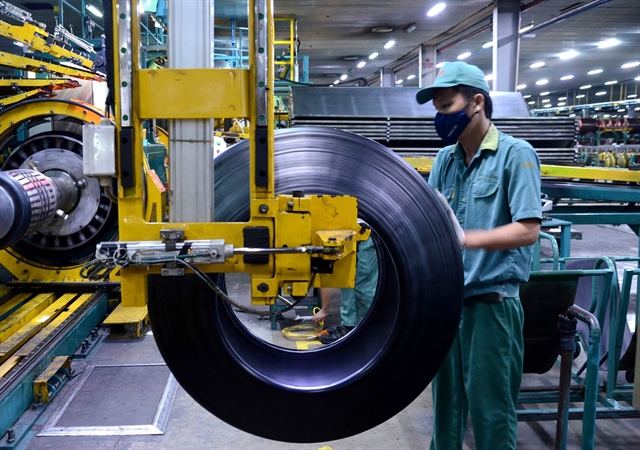In a report released on April 1, the S&P Global Vietnam Manufacturing Purchasing Managers' Index (PMI) posted above the 50.0 no-change mark for the first time in four months during March, signalling an improvement in business conditions at the end of the first quarter of 2025.

HÀ NỘI — Việt Nam's manufacturing sector returned to growth in March, with renewed increases in both output and total new orders.
In a report released on April 1, the S&P Global Vietnam Manufacturing Purchasing Managers' Index (PMI) posted above the 50.0 no-change mark for the first time in four months during March, signalling an improvement in business conditions at the end of the first quarter of 2025.
The PMI was up to 50.5 in March, from 49.2 in February, indicating a slight strengthening in the health of the sector.
Manufacturing production increased for the first time in three months during March, and by the largest degree since August last year.
According to respondents, the rise in output partly reflected improvements in the availability of goods, but also a renewed increase in new orders, which also grew following a two-month sequence of declines.
Growth of new orders was recorded amid signs of improving customer demand, but was only slight amid ongoing weakness in international demand.
In fact, new export orders decreased markedly and at the fastest pace since July 2023. New business from abroad has now fallen in five successive months, while some panellists reported a drop in orders from mainland China.
While output and total new orders returned to growth, firms were slightly less confident in the year-ahead outlook for production than they were in February.
Sentiment remained positive amid higher new orders and hopes for stable demand, but optimism was below the series average. Manufacturers exhibited caution regarding employment and purchasing in March.
Purchasing activity, meanwhile, decreased for the first time in four months, with firms suggesting that the recent period of input buying meant that holdings of goods were sufficient to support output requirements.
In turn, stocks of purchases decreased, albeit to the least marked extent since August last year. Stocks of finished goods were also down amid reports that firms were reluctant to hold excess inventories.
Where firms did purchase inputs, they were faced with a further lengthening of suppliers' delivery times, often linked to delays receiving goods from abroad.
However, the latest deterioration in vendor performance was much less pronounced than that seen in February and the weakest in seven months. It reported better stock availability at suppliers and faster transportation.
While higher costs for some imported items led input prices to increase again in March, muted demand for inputs led some suppliers to reduce their prices.
Overall, input costs increased only slightly and at the slowest pace in the current 20-month sequence of inflation.
Meanwhile, efforts to maintain competitiveness led manufacturers in Việt Nam to lower their selling prices for the third consecutive month though the drop was only slight.
The Economics Director at S&P Global Market Intelligence, Andrew Harker, said: "The Vietnamese manufacturing sector kicked into gear in March, seeing the first increases in output and new orders in 2025 so far. Firms will hopefully be able to build on these improvements in the months ahead.
"For now though, there is still a fair amount of caution among manufacturers, leading to reluctance to hire additional staff or purchase extra inputs. This potentially reflects an uncertain international environment, with new export orders falling sharply during March." — VNS





